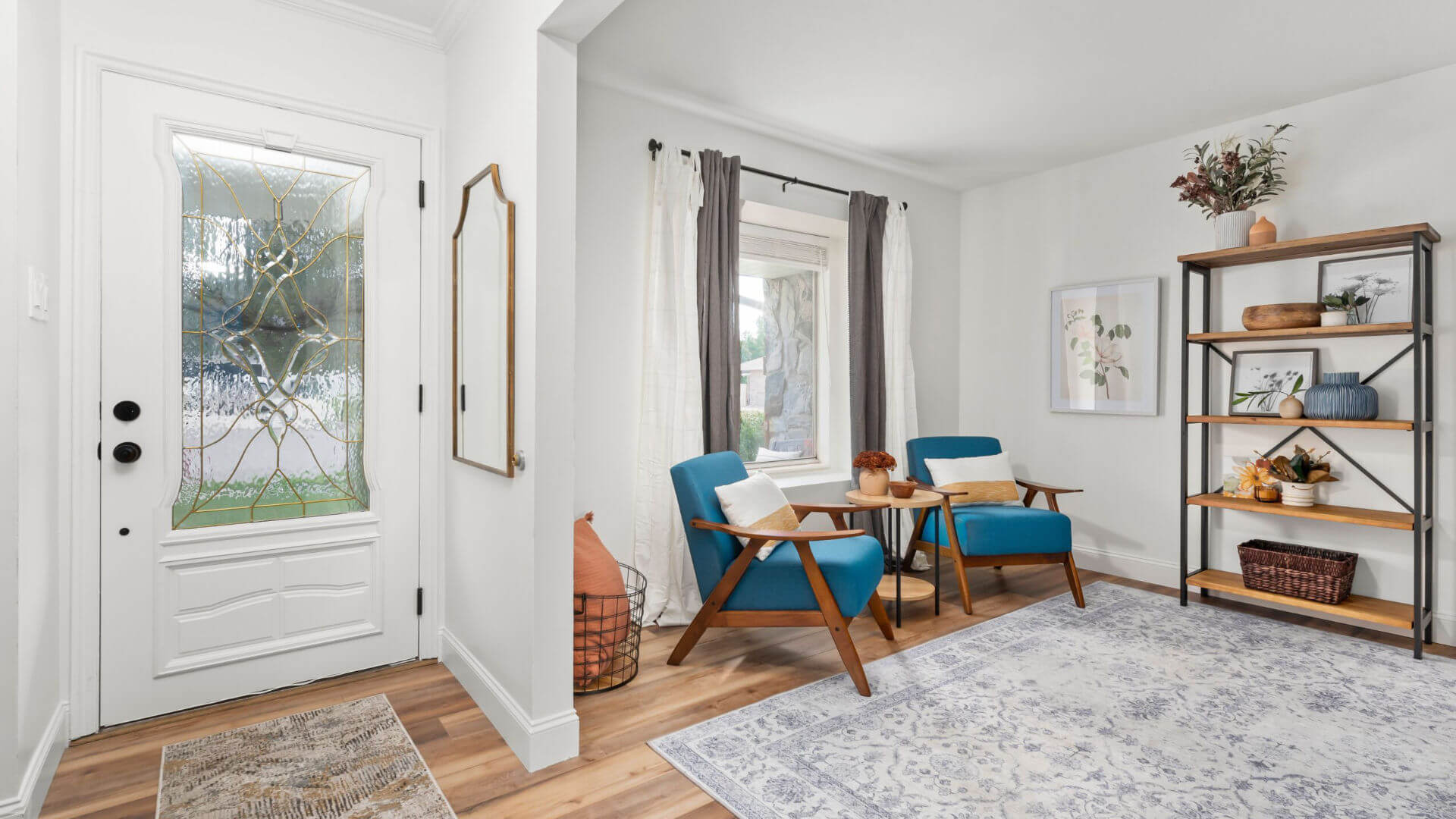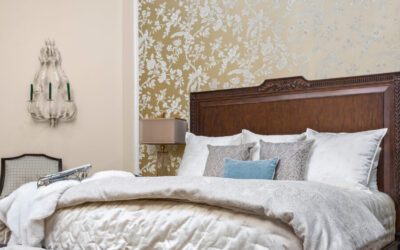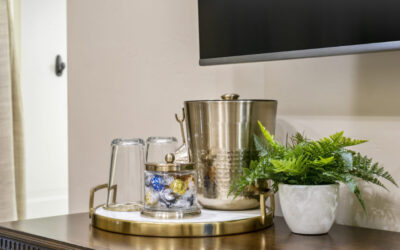Are you ready to transform your home from dull, outdated, and clumsy to an airy, modern, and elegant space? If so, it’s time for a transition in interior design.
Transitional interior design is the perfect mix of modern and traditional. It takes the best of both styles and molds them into one cohesive look that’s sophisticated yet refreshing. With this style, you can keep your pieces that mean something special to you while upgrading with pieces that better fit your personality.
But creating the perfect transitional interior design isn’t as easy as just throwing all of your existing furniture together with some new pieces – there are some tips and tricks to make sure you get the look just right. In this article, we’ll share with you the essential tips for creating a transitional-style home. From choosing a neutral color palette to strategically placing accessories throughout your space; follow our advice and you’ll have a stunningly stylish home in no time!
What Is Transitional Interior Design?
Transitional interior design is a style that blends traditional and modern design elements. It looks timeless and elegant, and it is all about creating an atmosphere that’s both inviting and stylish. It puts an emphasis on balance and harmony while blending classic pieces with new furniture, fabrics, and colors.
Transitional interior design isn’t necessarily about either traditional or modern style, rather it celebrates the best of both worlds. The key to achieving this look is to keep the color palette neutral, incorporate texture, limit decorative accessories, and find furniture that features sleek lines and rounded elements. By doing this, you can create a space that exudes sophistication without being over the top or too trendy.
With transitional interior design, the focus is on creating a sense of calm in your home by infusing it with a timeless appeal. Experiment with different combinations until it feels right for you—there’s no wrong way to pull off this look!
Tips for Creating a Transitional Interior Design Style
Transitional interior design is a style that blends traditional and contemporary elements, creating a look that is both timeless and modern. To get it just right, you need to pay attention to color, texture, and furniture shapes. Here are some tips for creating the perfect transitional interior design for your home.
Firstly, keep your color palette neutral. This means sticking to whites, grays, creams and beiges as your base colors. This will allow you to add in pops of bolder shades when you need them–adding in an accent wall or bright furniture pieces can really help bring life into the room.
Next, incorporate textural elements throughout the space. The textures should be soft and inviting rather than harsh and overwhelming–think leather upholstery instead of rough cottons or jute rugs instead of sisal mats. These elements can help draw attention to different areas of the room, adding visual interest without taking away from the overall flow of the room.
Thirdly, limit accessories–particularly items with sharp edges or lines–as these can create a jarring effect within a transitional space. Instead go for rounded shapes when adding decor pieces such as lamps or mirrors, which will help soften the overall look of the room.
Finally, find furniture that features sleek lines as well as rounded elements–such as tapered legs on a coffee table or soft cushions on chairs and sofas–to complete the transitional look in your home. Experiment until it feels right and don’t be afraid to mix up different styles until you find something that works for you!
Keeping a Neutral Color Palette
When it comes to creating a transitional interior design style, one of the most important elements is keeping a neutral color palette. A neutral color scheme makes it easier to mix and match different furniture pieces and decor elements. Plus, a neutral base will let you introduce more adventurous colors in pops through accent pieces.
You don’t need to stick to one color of course—a combination of gray, taupe, beige and white can work wonders for any space. This allows you to switch up your decor over time without having to revamp the entire room. Try experimenting until you find a combination of shades that feel just right for your space!
Incorporating Textural Elements
Now that you have your neutral color palette, it’s time to add texture. Incorporating texture is a great way to make sure that your interior design feels complete and cozy — think of it as an added layer of interest. Textural elements are incredibly important when creating the perfect transitional style.
Texture Combinations
Layering different textures adds depth and interest to interiors — the key is to combine different textures without making your space look over-the-top or busy. Think about pairing reflective materials like glass and polished metals with textiles like velvet, leather, fur, or suede. You can also play with natural elements such as jute, rattan, and bamboo for a more organic vibe.
Walls
The walls are a great starting point for incorporating texture into transitional interior design — they serve as the canvas of your room. To add visual interest to your walls, use faux finishes such as Venetian plaster or sponging techniques; hang wallpapers; expose brick; or choose wall art with a unique texture like fabric-covered canvases or 3D tiles.
Floors
Don’t forget about the floors! Transitioning between flooring materials is another great way to create contrast in your home. You can mix materials such as wood and concrete or carpet and rugs for a truly unique look. You can also try adding patterned area rugs for an extra pop of color and texture in any room.
Limiting Accessories
If there’s one key thing to remember about creating the perfect transitional interior design, it’s this: limit your accessories. A small number of carefully chosen pieces can go a long way.
When it comes to accessories, think quality over quantity. Remember, your goal is to create a peaceful atmosphere and an inviting space that has just the right balance of elements. Selecting too many pieces and items can quickly make the room look cluttered and detract from your eye-catching furniture pieces and wall art.
There are some guidelines you can follow when choosing the pieces you’ll use to finish off your room’s look:
- Choose accessories in timeless materials like wood, glass, or metals
- Choose unique statement pieces but limit yourself to two or three
- Add in some greenery with plants or floral arrangements
- Place items in groupings instead of scattered around the room
- Make sure every accessory plays a role in the room’s design esthetic
- Incorporate items that blend with existing colors and textures – nothing too bold
- Don’t forget symmetry! It helps make a room feel balanced and visually pleasing.
By taking these steps into account, you can easily create the perfect transitional interior design for any home without overwhelming the space with too many items!
Finding Furniture With Sleek Lines and Rounded Elements
The key to pulling off a transitional interior design is finding furniture with sleek lines and rounded elements. This combination makes for a very modern, muted look that can bring together different elements of a room in an enticing way.
For instance, rounded elements give an air of elegance to any room—especially when paired with modern lines. This can be done by incorporating eclectic pieces that have both curves and sleekness, or two pieces that contain just one or the other. You could opt for one larger item that features both aspects like an armoire, or many smaller items like accent chairs.
To keep the overall effect organic, you might find it helpful to mix warm and cool colors in your furniture choice—think browns, blues, grays etc. For example, an armchair with a cool gray finish and round shape would pair perfectly with a warmer hue like tan in a bookshelf with sharper lines. When need be, you could also accessorize further with throws and pillows to make the look more vibrant.
Remember: Experimenting until you find the perfect combination of sleek lines and curves is half the fun of creating the perfect transitional interior design style!
Conclusion
Transitional interior design is all about creating balance and harmony in your home. It’s about blending modern and traditional elements, and pairing both sleek lines and rounded edges. It’s about experimenting until you find the style that’s right for you.
Using neutral colors and textural elements, you can create a beautiful space that is both timeless and modern. By limiting your accessories and finding furniture with sleek lines and rounded elements, you can achieve a timeless look that will stay in style for years.
Whether you’re looking to give your home a complete makeover or just hoping to spruce it up a bit, these transitional interior design tips will help you create an inviting, beautiful space that is just right for you.

Interior design is the art of arranging the environment, usually within a home, to create a beautiful and functional space. It encompasses many different fields, including architecture, decorating, and furniture design.
Some of the main benefits of interior design include:
-You can make your home feel more comfortable and inviting by choosing the right furniture and decorations.
-You can use interior design to make your home look more stylish or modern. Get Yourself an Expert
-Interior design can help you save money on things like plumbing and electrical work because you’ll be able to hire professionals who know what they’re doing instead of doing it yourself. Get Yourself an Expert
-It’s an excellent way to improve your home’s value if you ever decide to sell it in the future. Get Yourself an Expert






0 Comments